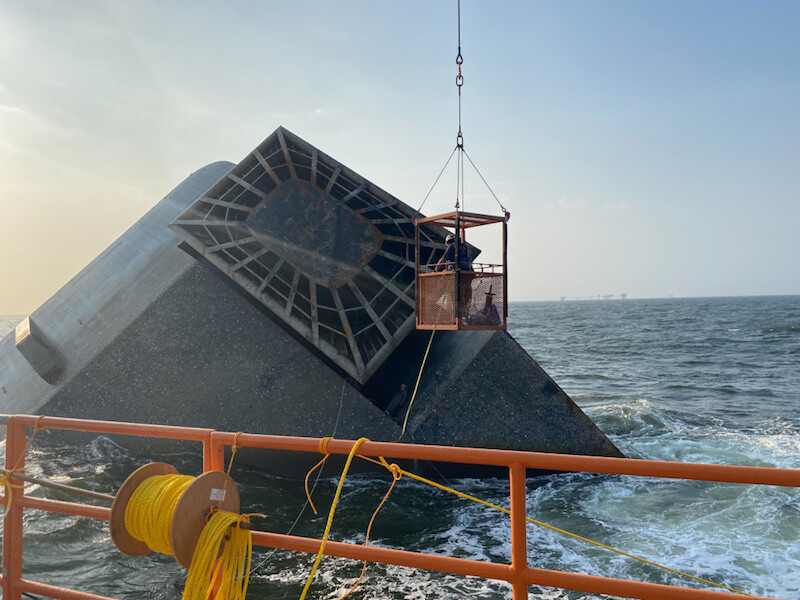Salvage crews have finished removing thousands of gallons of diesel fuel from the overturned liftboat Seacor Power's fuel tanks, according to the U.S. Coast Guard. The operation took place approximately eight miles off Port Fourchon, La. Additional petroleum products such as hydraulic oil are still being removed.
Seacor Power capsized in heavy weather about eight miles off the Louisiana coast. Of the 19 people onboard the Seacor Power that left Port Fourchon on Tuesday afternoon April 13, six are now dead, six have been rescued, and seven are still missing.
Salvage crews are using a method called hot tapping, which allows for drilling into the fuel tanks and making a hose connection without ruining the integrity of the tank or causing pollution impacts. Divers are performing this process above and below the water, connected to an air hose, and it is imperative that mariners respect the one-mile safety zone during these evolutions.
Weather is key to a safe evolution, and if weather conditions exceed approximately 15 mph winds, four-foot seas, and the current is faster than 1.25 mph, work will cease until there are safer conditions.
The 265-class Seacor Power is a three-legged liftboat with a 49'x29'x5' working pad. It has a cargo deck capacity of 491 LT and a clear area of 11,000 sq. ft. It is outfitted with two cranes, port and starboard, each 185-ton capacity with 120' boom.
The liftboat was reported to have left port just after a strong line of thunderstorms passed through the area in the early afternoon.




